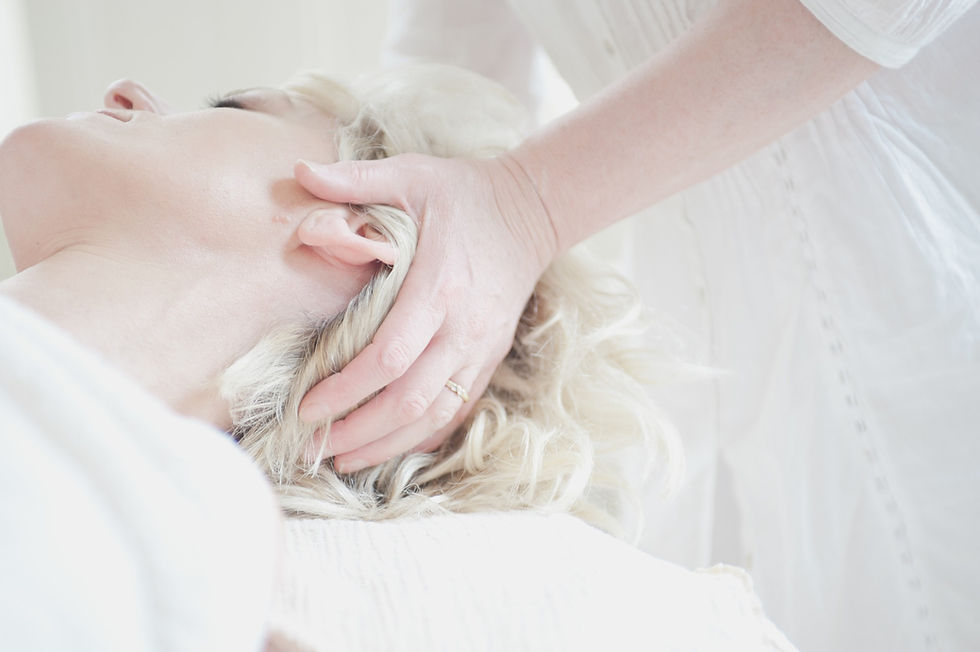Craniosacral therapy: The healing power of gentle touch
- msricerichardson
- Dec 16, 2011
- 3 min read
Free Press Article – December 16, 2011
Joseph Ellerin
I am often asked by my clients to explain craniosacral therapy and how it works. I find this more difficult to do than explaining other therapies I practice such as acupuncture, homeopathy or nutrition.
Part of the reason is that some schools of thought regarding craniosacral therapy view it as manipulation of bones and fascia while others see it more as energy work. My view is that it encompasses elements of both.
Through our lives our bodies are conditioned and shaped according to how we react to stresses and trauma. If these stresses or trauma overwhelm us, they are locked in the body as restrictions until we are able to access resources to allow them to be processed and released.
Life expresses itself as motion. All healthy, living tissues subtly “breathe” with the motion of life. This phenomenon produces rhythmic impulses called the “Breath of Life” by its founder Dr. William Sutherland.
Working with the spine, skull, cranial sutures, and fascia, the craniosacral practitioner uses his or her hands to evaluate the craniosacral system by feeling various parts of the body. Detecting ease of motion and sensing the rhythm of the cerebrospinal fluid circulating around the brain and spinal cord, the craniosacral therapist helps resolve the trapped forces that underlie patterns of disease. The earliest osteopaths regarded cerebral spinal fluid to be an essential part of the body’s self-regulating, and self-healing mechanisms.
Dr. Sutherland believed the potency of the Breath of Life was an invisible element found within the cerebrospinal fluid. This element does not actually mix with the cerebrospinal fluid, but has potency that drives its fluctuation.
Three subtle rhythms have been identified in what craniosacral therapists refer to as the “primary respiratory system,” each having a different rate and producing rhythms within rhythms. These subtle rhythms produced by the Breath of Life are regarded as expressions of health. This acts as a blueprint for health which was present before our birth and maintains balance in our form and function.
Dr. Sutherland also recognized the important role fluids play in the body (particularly cerebrospinal fluid) to help disseminate these ordering processes through the body. Restrictions at certain sites in the body hinder the ability of our essential blueprint for health to manifest at a cellular level. Essentially, the craniosacral practitioner will listen “through the hands” for any congestion, identify areas where issues are held, and gently allow for the natural priorities of healing to take place as directed by the client’s own physiology.
A typical craniosacral session is performed with the client fully clothed and laying face up on a massage table. The therapist places the hands gently on the body (often behind the head), tuning into the body by “listening with their hands.” A typical treatment will last between 40 and 50 minutes. Clients will often report a sense of deep relaxation during and after the treatment and may even feel a little light-headed. Besides being able to bolster resistance to disease, craniosacral therapy is effective for a wide range of disorders including migraines, chronic fatigue, PTSD, chronic neck and back pain, traumatic brain and spinal cord injuries, colic, and many others.
——————
Joseph is a licensed acupuncturist, classic homeopath, and registered massage therapist. He practices at Healing Horizons Integrated Health Solutions located at 2139 N. 12th St. #7. For more information, call 970-256-8449. Also, join Joseph for his tai chi classes starting Jan. 16. Call 256-8449 to preregister, or for more information.







Comments